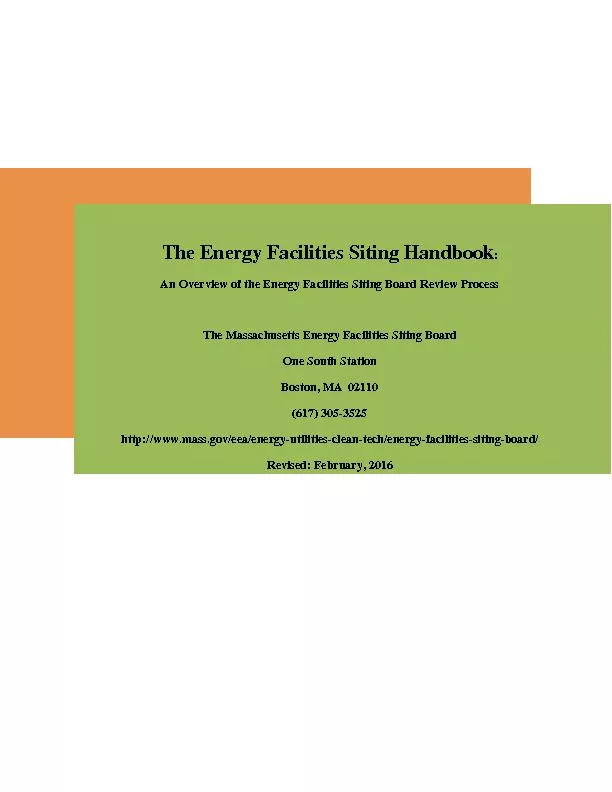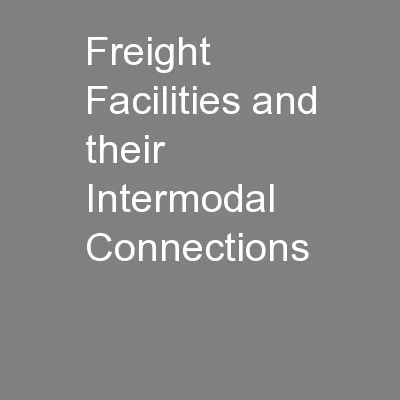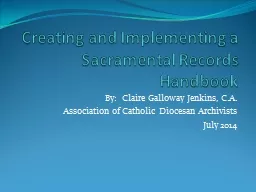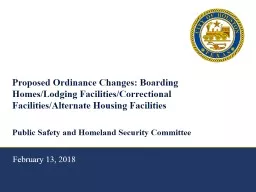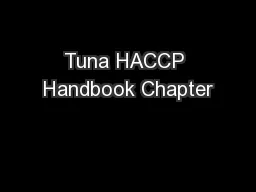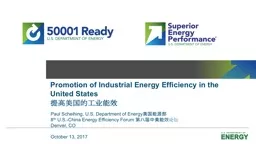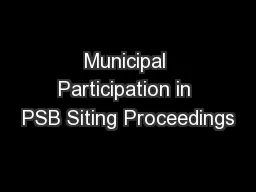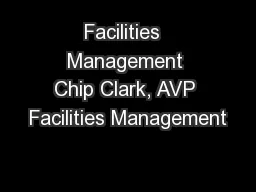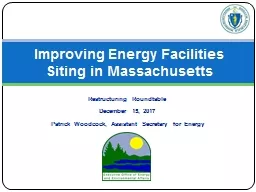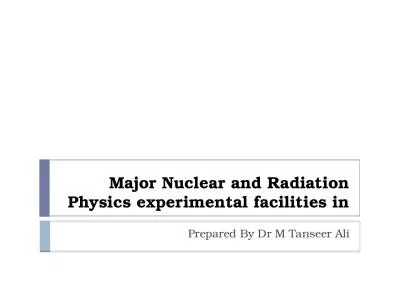PDF-The Energy Facilities Siting Handbook
Author : olivia-moreira | Published Date : 2016-08-02
An Overview of the Energy Facilities Siting Board Review Process The Massachusetts Energy Facilities Siting Board One South Station Boston MA 02110 617 305 3525 httpwwwmassgoveeaenergy
Presentation Embed Code
Download Presentation
Download Presentation The PPT/PDF document "The Energy Facilities Siting Handbook" is the property of its rightful owner. Permission is granted to download and print the materials on this website for personal, non-commercial use only, and to display it on your personal computer provided you do not modify the materials and that you retain all copyright notices contained in the materials. By downloading content from our website, you accept the terms of this agreement.
The Energy Facilities Siting Handbook: Transcript
Download Rules Of Document
"The Energy Facilities Siting Handbook"The content belongs to its owner. You may download and print it for personal use, without modification, and keep all copyright notices. By downloading, you agree to these terms.
Related Documents

